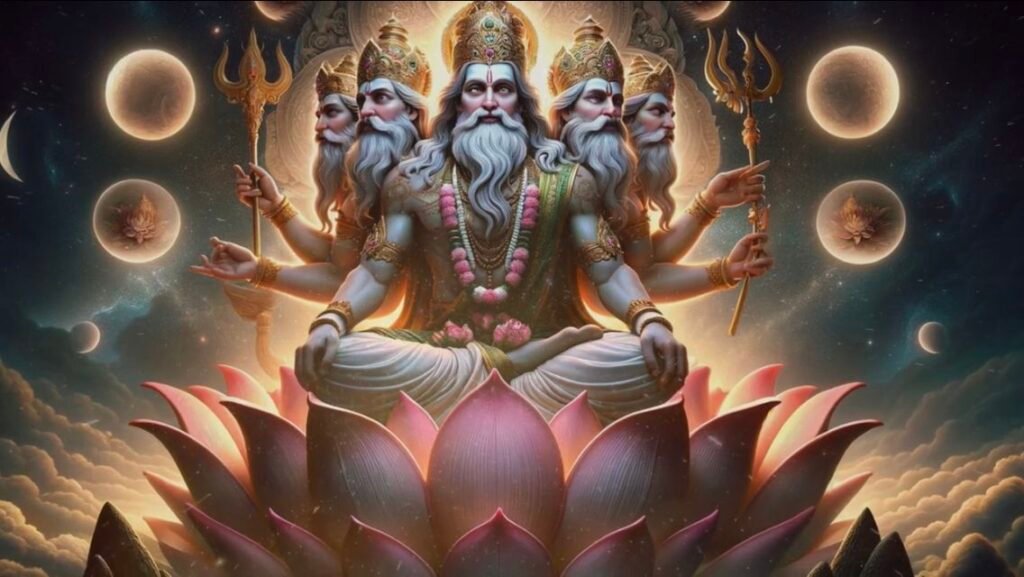Samanvaya
Samanvaya

The Samanvaya Adhyaya, the first chapter of the Brahma Sutras, is devoted to establishing the unity and consistency of the teachings of the Upanishads. The word Samanvaya means “harmony” or “reconciliation.” In this chapter, Sage Bādarāyaṇa (Vyāsa) shows that although the Upanishads speak of the Supreme Reality using different names, symbols, and descriptions — such as Atman (Self), Brahman (Absolute), Purusha (Cosmic Being), or Paramatman (Supreme Self) — all of them ultimately refer to one and the same reality, Brahman, the infinite, eternal source of all creation.
This chapter answers a fundamental question: What is the central theme of the Upanishads? Bādarāyaṇa explains that the central purpose of all Vedantic texts is to reveal the knowledge of Brahman, the supreme cause and substratum of the universe. Just as rivers, though taking different courses, all merge into the same ocean, the various teachings of the Upanishads converge in the single doctrine that Brahman is the origin, sustenance, and end of everything.
The Samanvaya Adhyaya also refutes the idea that the Vedas teach multiple or conflicting truths. Some parts of the scriptures deal with rituals (karma-kanda), while others deal with knowledge (jnana-kanda). Vyāsa clarifies that rituals are preparatory disciplines meant to purify the mind, but the highest knowledge — the realization of Brahman — is the ultimate goal of the Vedas. By bringing together apparently diverse statements, he demonstrates that there is no contradiction among the Vedic texts; instead, they are harmoniously united in purpose and meaning.
This chapter thus forms the foundation of Vedanta philosophy. It establishes that Brahman alone is the ultimate reality, the cause of the world, and the true Self within all beings. Knowing Brahman destroys ignorance (avidyā), which is the root of bondage, and leads to liberation (moksha), the realization of one’s oneness with the Infinite. Through logical reasoning and scriptural analysis, the Samanvaya Adhyaya confirms that the Upanishads consistently teach the non-dual truth of Brahman, and all other teachings are meant to lead the seeker toward this supreme realization.
Across the vast body of Vedic literature, we find many expressions describing the Ultimate — such as Atman (Self), Brahman (Absolute Reality), Purusha (Cosmic Being), Paramatman (Supreme Self), or Ishwara (Lord). These different terms and descriptions can easily create confusion, leading one to think that the scriptures speak of multiple realities or gods. However, in the Samanvaya Adhyaya, Vyāsa proves through systematic reasoning that all these expressions point to the same single truth, viewed from different angles. Just as the same sun appears different when seen through clouds, water, or crystal, the one Brahman is revealed in many forms and names depending on the spiritual context and the level of understanding of the seeker.
This chapter also deals with the interpretation of the Vedas. It clarifies that while some parts of the Vedas (known as Karma Kanda) deal with rituals, sacrifices, and duties that help in purifying the mind, the latter portion — the Jnana Kanda or Upanishads — aim at imparting the knowledge of Brahman, which alone leads to liberation (moksha). Vyāsa shows that the ultimate goal of all Vedic teaching is Brahma Jnana (knowledge of the Absolute), not mere ritual or material attainment. Rituals may purify and prepare the seeker, but realization of Brahman alone grants freedom from the cycle of birth and death (samsara).
Throughout this chapter, Bādarāyaṇa quotes various Upanishadic passages to demonstrate their unity of purpose. Whether it is “Tat Tvam Asi” (Thou art That) from the Chandogya Upanishad, “Aham Brahmasmi” (I am Brahman) from the Brihadaranyaka Upanishad, or “Sarvam Khalvidam Brahma” (All this is indeed Brahman) from the Chandogya Upanishad, all these declarations convey one and the same truth — the oneness of the individual Self (Atman) and the Supreme Self (Brahman).
The Samanvaya Adhyaya also responds to and refutes opposing philosophical views of that time — particularly those of Sankhya, Nyaya, and Vaisheshika schools — which proposed that the world originates from material causes like Prakriti or atoms. Vyāsa firmly establishes that Brahman alone is both the material and efficient cause of the universe — meaning that the entire cosmos arises from Brahman, is sustained by Brahman, and ultimately dissolves back into Brahman.
In essence, the Samanvaya Adhyaya is the chapter of spiritual synthesis. It reveals that the diversity of teachings in the Vedas and Upanishads is not contradiction but complementary expression of one truth. It invites the seeker to rise beyond superficial differences in form, name, and doctrine to grasp the underlying unity of existence — the truth that all is Brahman. Through this realization, the seeker attains the highest knowledge, transcends ignorance (avidya), and realizes their true identity as the eternal, infinite, blissful Self — the Brahman that is without beginning, without end, and beyond all duality.





















































